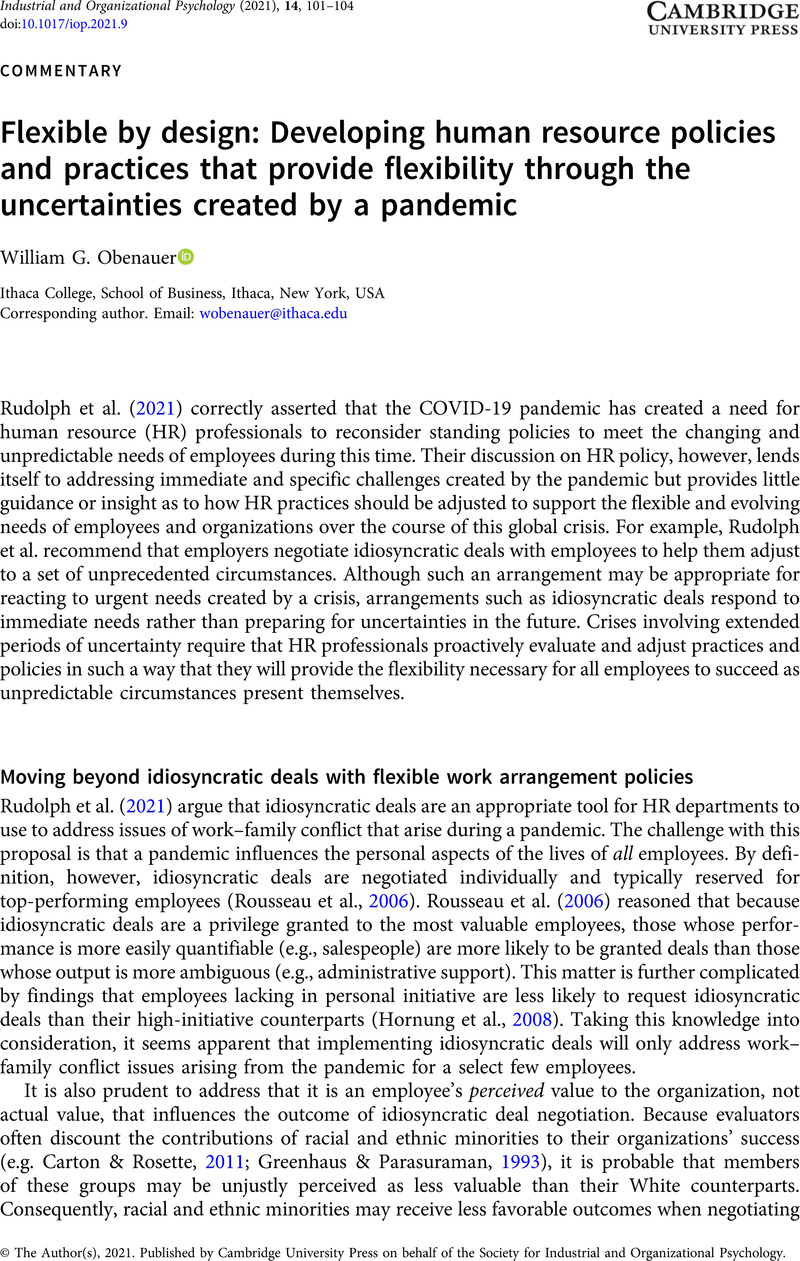Crossref Citations
This article has been cited by the following publications. This list is generated based on data provided by Crossref.
Liu, Zhihao
Zhang, Xiaoyan
Xu, Hanzhi
Deng, Hui
Li, Jiajia
and
Lan, Yuanyuan
2022.
The effect of i-deals on employees’ unethical behavior during the COVID-19 pandemic: The roles of hubristic pride and grandiose narcissism.
Frontiers in Psychology,
Vol. 13,
Issue. ,
Zacher, Hannes
and
Rudolph, Cort W
2022.
Researching employee experiences and behavior in times of crisis: Theoretical and methodological considerations and implications for human resource management.
German Journal of Human Resource Management: Zeitschrift für Personalforschung,
Vol. 36,
Issue. 1,
p.
6.
Barath, Matus
2022.
Developments in Information & Knowledge Management for Business Applications.
Vol. 421,
Issue. ,
p.
123.
Obenauer, William G.
2023.
Creating a Significant Learning Experience When Introducing Labor Relations to Students.
Management Teaching Review,
p.
237929812311519.
Zhang, Maolong
Hu, Enhua
and
Lin, Yanmei
2023.
The impact of flexibility-oriented HRM systems on innovative behaviour in China: a moderated mediation model of dualistic passion and inclusive leadership.
Asia Pacific Business Review,
Vol. 29,
Issue. 1,
p.
114.
Lathabhavan, Remya
and
Kuppusamy, Thenmozhi
2023.
Examining the role of digital leadership and organisational resilience on the performance of SMEs during the COVID-19 pandemic.
International Journal of Productivity and Performance Management,
Dryjanska, Laura
and
Battista, Peter
2023.
Covid-19: Health Disparities and Ethical Challenges Across the Globe.
p.
51.
Stephenson, Amber L.
Dzubinski, Leanne M.
and
Diehl, Amy B.
2023.
A cross-industry comparison of how women leaders experience gender bias.
Personnel Review,
Vol. 52,
Issue. 1,
p.
145.





